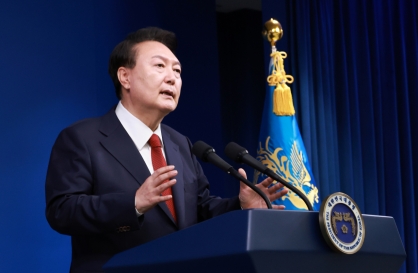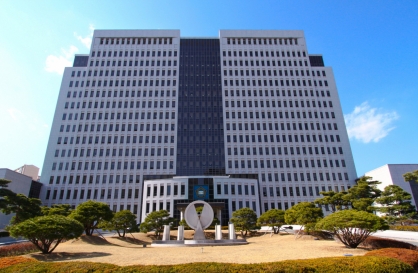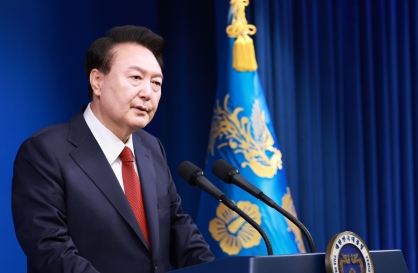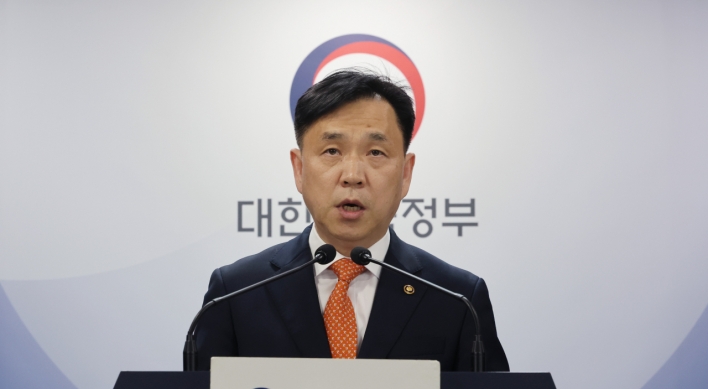<**2>
While Chinatowns are a standard presence in Western metropolises, Koreatowns are a little harder to find. Paris` 15th arrondissement, however, is a notable contender.
As the largest, in both size and population, of Paris` 20 districts, the 15th arrondissement is treasured for being a highly liveable, village-like alcove in central Paris. With its traditional shops and small parks there are relatively few major tourist destinations to exploit its native charm. And part of this charm lies in the Korean restaurants dotted throughout, each within a five-minute walk from the next.
Until recently, Paris` Korean community remained diluted both in location and in gastronomic identity. Chinatown resides in the 13th arrondissement, and a fleet of Japanese restaurants, bookstores and markets are centered in the 1st arrondissement; Korean ventures were often overshadowed by, or integrated into, these communities. One of Le Monde`s food writers, Jean-Claude Ribaut, commented in a November 2007 review, "We almost ignore Korean cuisine here, despite the efforts of the restaurants in the Paris region. We often even confuse it with the cuisine of China or Japan." This realization, however difficult to digest, was also a moment of self-awareness, emblematic of a turning point in France`s engagement with Korean cuisine.
A renewed cultural dialogue sparked in 2006, following events celebrating the 120th anniversary of diplomatic relations between France and Korea. November 2007 then witnessed, unrelated to the Le Monde review, the first Korean Cuisine Festival, which was a nine-day event organized by the Centre Culturel Coreen (Korea Culture Center) held at the Paris UNESCO headquarters.
language="JavaScript"src="/khjs/banner/article_340.js">
Shortly thereafter, in 2008, the first edition of "Guide des Restaurants Authentiques Coreens (Guide to Authentic Korean Cuisine)" gave face to the growing number of Korean restaurants in Paris, particularly centered in the 15th arrondissement. Of the 63 listed in the guide, 35 percent are located in the 15th. More than half of the Korean grocers in Paris are located also in the 15th arrondissement.
This contemporary guide has a predecessor: "L`Asie a Paris (Asia in Paris)," published in 1983, which counted five Korean restaurants in Paris. Today, it is estimated there are more than one hundred. Madame Blin, speaking on behalf of the Chamber of Commerce and Industry, Korea-France, estimates five years ago there were no more than sixty Korean restaurants. There is undeniably a trend afoot. A Korean Ministry of Foreign Affairs report counts the Korean community in France in 1988 to have been 3,310 - a number that tripled by 2000, and grew a further 30 percent by 2007. Whether the growth in restaurants in Paris is a direct consequence of Korean immigration is difficult to determine.
<**3>
Gwon`s Dining, located in the heart of the 15th arrondissement, with its aesthetically refined interior, is a popular dinner destination for the business and diplomatic elite, hosting VIP visits, for example, from nearby UNESCO. Owner Monsieur Gwon, while not particularly receptive to journalists, has definite ideas on the Korean restaurant trend in Paris.
"Just because there are a growing number of restaurants, does not mean necessarily that there is an equal growth in quality, stature or local demand for Korean cuisine," he says.
Regarding stature, he elaborates: "We ourselves cannot estimate the value of our own cuisine on the world stage. We should not create an image of Korean cuisine artificially; I wish that it finds its place naturally."
As to why the increase in restaurants has occurred in the first place, his other vocation emerges (he holds a Ph.D in sociology). "Koreans tend not to leave the Korean community. It is important to remember that many open restaurants because they need to earn a living and feed themselves or they do not have the education to do otherwise." He pauses, "It`s an important subject, close to my heart."
While many Koreans open restaurants in the 15th arrondissement to be close to where they reside already, and where they are guaranteed regular Korean clientele, Bibimbap, which opened in 2007, chose a different path. Kwon Cha-young took a moment out from a busy Sunday service to talk on behalf of herself and her husband Kwon Young-chul, who is the president of an association of Korean restaurant owners in France, formed last year. She explains chance brought them to the 5th arrondissement, just steps from one of Paris major train stations Gare d`Austerlitz. They are pleased with their positioning as opposed to the 15th, which Kwon thinks is oversaturated with Korean restaurants.
"It is very important for us to have French clientele," she says. "We like that Korean food is shared outside of our community. Most of our clientele is French, and being close to the train station allows us to share our food with French who travel to Paris from Bordeaux, for example. We feel we`ve chosen well to be here."
Bibimbap received a mention in the 2009 editions of Michelin Guide`s Centieme Edition, and Gault Millaut. Bibimbap, which prepares its vegetables fresh every morning for its eponymous dish, says they have managed to adapt to French tastes without losing authenticity.
"The French are not habituated to many Korean vegetables, and some of them are just too costly and hard to find here," she explains. "So, for example, instead of campanula root we use bean sprouts, but we maintain the variety of color and tastes in the dish." The restaurant offers five different types of bibimbap, notably a delicious version with sizzling, spicy pork.
Back in the 15th arrondissement, Kim Jun-sik is the perfect example of a local resident, who prefers to keep his business close to his community. Bong is known particularly for its "bulgogi," or Korean barbeque, and as a casual lunch spot for UNESCO employees. Before opening Bong in 2005, Kim operated a Korean grocery for three years, also in the 15th arrondissement, in which capacity he also supplied imported Korean food to at least 15 restaurants in the area.
Kim maintains at this time there were no more than 30 authentic Korean restaurants in Paris. He has certainly found a host of regulars over the years, and his place is known for being filled with largely Korean clientele. The French seem, however, to appreciate the conviviality of Korean barbeque - the grills at Bong are built into each table and are an integral part of his restaurant.
"The French eat chronologically, the Koreans eat spatially," he said, referring to France`s traditional mealtime progession of courses contrasted to the variety of small dishes and differing tastes simultaneously displayed across a typical Korean table.
As to the future of Korean cuisine in France, Park Gun-hyoung, a Parisian resident since the age of 12, now aged 26, takes a global approach. Upon graduating from the American University of Paris with degrees in International Communications, Park then completed one of Paris`s more prestigious French cooking programs, obtaining a Diplome Superior from the Ritz Hotel - using the butter, cream and traditional techniques for which France in famous.
He intends to use his skills, one day, to promote Korean cuisine; he has been training himself by reading Korean cookbooks.
"Koreans need to unite together in order to introduce Korean food to Parisians. The Chinese created the 13th arrondissement in Paris, the Japanese created an area in the 1st arrondissement. Korea needs to create a Koreatown, ideally supported by the Korean government," he says.
Does he find Parisians particularly eager to learn about Korean food? "Not at all. Most of the Europeans and Americans know only of Japanese and Chinese food. I know for sure, though, once they go to a good Korean restaurant and taste Korean food, they will go back."
And, indeed, that`s what they appear to be doing. Of nearly every Korean restaurant owner referenced, each noted an increase in the number of French patrons over the past few years.
While most Parisians know Korean cuisine for its barbeque, few would be able to further identify the 15th arrondissement as an area of particular note for Korean cuisine. Yet for those who take a closer look, a strong community is establishing roots.
(sarawhitewilson@mac.com)
By Sara White Wilson





![[K-pop’s dilemma] Can K-pop break free from ‘fandom’ model?](http://res.heraldm.com/phpwas/restmb_idxmake.php?idx=644&simg=/content/image/2024/05/09/20240509050541_0.jpg&u=20240509173751)




![[News Analysis] Yoon's first 2 years marked by intense confrontations, lack of leadership](http://res.heraldm.com/phpwas/restmb_idxmake.php?idx=644&simg=/content/image/2024/05/09/20240509050612_0.jpg&u=20240509233252)







![[Today’s K-pop] NCT’s Mark to drop 1st solo album in February 2025](http://res.heraldm.com/phpwas/restmb_idxmake.php?idx=642&simg=/content/image/2024/05/10/20240510050597_0.jpg&u=)